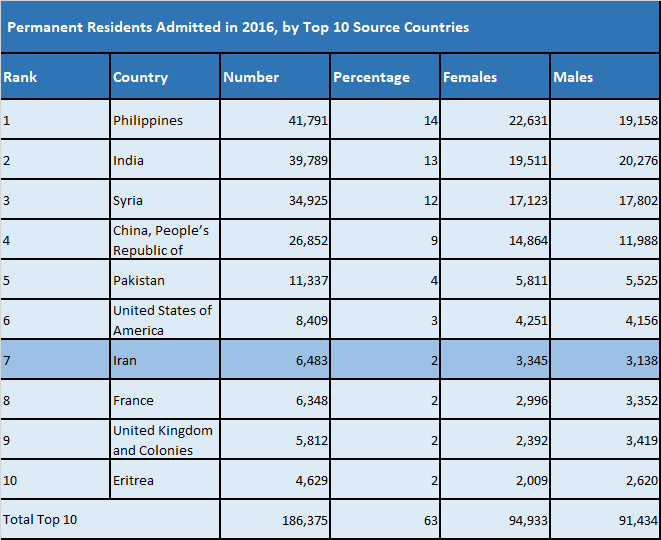The Government of Canada tabled the 2017 Annual Report to Parliament on Immigration levels plan. The new plan sets out the highest levels of new permanent residents to be welcomed to Canada in recent history.
Under the plan, Canada will accept 310,000 new permanent residents in 2018. That number will grow to 330,000 in 2019 and to 340,000 in 2020, trending towards one percent of the population. By welcoming more newcomers, the plan aims to support Canada’s economic growth, drive innovation and address labour shortages across the country.
Of the 310,000 newcomers for 2018, the plan sets 60 percent of them to come to Canada for work. Increased levels also allow Canada to uphold humanitarian commitments by offering protection to refugees and creating the needed space to reduce backlogs and processing times for families sponsoring spouses, children, parents, grandparents, and caregivers.
This multi-year plan reflects a continued commitment to ensuring that Canada’s immigration system is well-managed. Longer planning and the gradual increase of immigrants allow the provinces and territories, as well as settlement and integration partners, to plan for the arrival of more newcomers.
In 2016, Canada welcomed 296,000 permanent residents – nearly 25,000 more than the previous year. The majority of newcomers came for work, but Canada also welcomed more than 62,000 resettled refugees, asylum seekers and people admitted on humanitarian and compassionate grounds, as well as some 78,000 newcomers who were sponsored by their families.
The aging of our population and a declining fertility rate will continue to have a significant impact on our economy. In 1971, there were 6.6 people of working age for each senior. By 2012, the worker-to-retiree ratio had dropped to 4.2 to 1, and projections put the ratio at 2 to 1 by 2036, at which time five million Canadians are set to retire.
Immigration alone cannot solve this demographic challenge, but it can help, as we look to keep our economy growing and maintain our commitments to health care, public pensions and other social programs. In recent years, more than 80 percent of the immigrants we admit have been under 45 years of age.
Immigration has made Canada the nation it is today, one that’s diverse, prosperous and welcoming to those in need. In any given year, we bring in immigrants from upwards of 190 different countries. While this creates important linkages in a global economy, it also adds enormously to the richness of our society. Canadians take pride in the fact that our country is diverse and open to all, which in turn helps us to attract the best and the brightest.
In 2016-17, more than 412,000 permanent residents accessed at least one settlement service in Canada. When surveyed, 91 percent of Settlement Program clients reported being able to make informed decisions on a wide variety of subjects, including education, healthcare and housing. And 87 percent of clients who were in Canada for one year or more reported being able to use an official language to function and participate in Canadian society.
An increasing number of the people we select for immigration are already here, as a temporary foreign worker, or having studied at one of our universities or other post-secondary institutions. These individuals know our country, speak one or both of our official languages, and generally have work experience here. They are excellent candidates because we can be relatively assured they will integrate well.
For all Economic Class admissions, 49% were females and 51% were males. Among principal applicants only (69,709), 42% of principal applicants were female while 58% were male. In 2016, the gender gap between female and male principal applicants was 16 percentage points.





